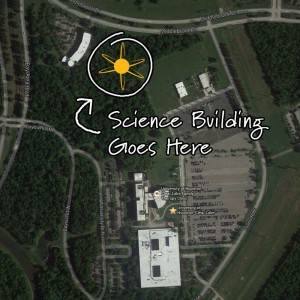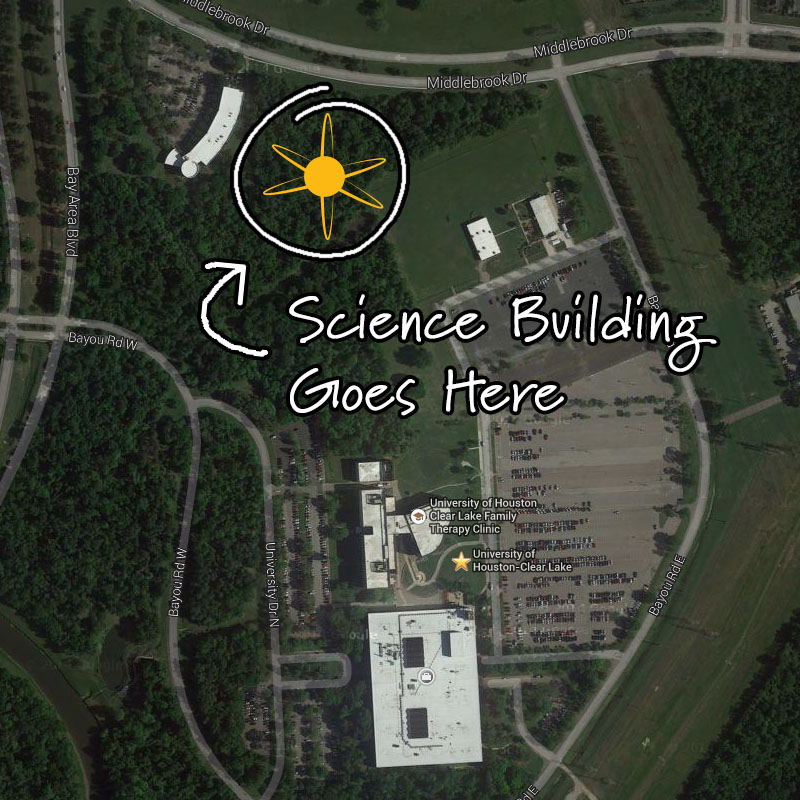UHCL seeks funding for STEM classroom building

The university is planning the construction of a new STEM (science, technology, engineering, mathematics) academic building that will provide more room for the growing student body and fulfill a need for sufficient space to house classrooms and labs.
The university is requesting that $120,000,000 be allocated from the state legislature to provide for both the new building enterprise and for renovations to vacated areas left by occupants who will move into the new building.
“We are in early planning stages for use of the facility at this time,” said Michelle Dotter, vice president of administration and finance. “A planning team made up of faculty, academic leadership and facility administrators is working with a consultant whose expertise is in programming space for large STEM related academic facilities. We will make recommendations to Dr. Staples.”
The new facility will be roughly the same size as the Student Services and Classroom building (SSCB), around 176,000 square feet, and located closer to Middlebrook Drive north of the SSCB building.
“It is planned to house primarily natural sciences, instructional labs, faculty and administrative offices, and general purpose classrooms that are available for use by all schools,” Dotter said.
David Garrison, associate professor, chair of physics, and director of graduate programs for the school of science and computer engineering, affirmed the need for more space to house the growing student
body.
“There is a great need for additional teaching resources for physics at UHCL,” Garrison said. “This is because of several factors including the recent development of our BS in Physics program, the development of our new Minor in Physics, the demand for Introductory Astronomy among non-science majors and the requirement that virtually all science and engineering majors must complete at least two semesters of non-calculus or calculus-based physics courses.”
Further illustrating a need for more space, Garrison acknowledged that with the university’s current resources operating at full capacity, it can teach no more than 192 physics students and 192 astronomy students, which would pose a problem if the new STEM building expansion were not in the works.
“Approximately one-third of all new students at UHCL are choosing to major in STEM fields and will be required to complete at least two physics courses with lab,” Garrison said. “For a university with an enrollment of 12,000 to 15,000 students (our estimate within ten years) this typically translates into 300-1000 introductory physics students per semester with a median of 500 students for the universities I surveyed.”
Garrison projects an expected 500-600 science and computer engineering students per semester given the size of the biology, chemistry and computer science programs.
“We also estimate that we will be teaching approximately 250-500 intro astronomy students by that time,” Garrison said.
Garrison observed that the university’s current resources are insufficient to handle the predicted future demand without acquiring additional resources, including faculty and labs; mentioning as well that building additional labs will take approximately two years since they have requirements beyond the needs of normal classrooms.
Another proponent of a STEM building acquisition, Aaron Herridge, physics major and president of the physics club, affirms current space is inadequate, stating the entire physics department currently shares one lab classroom, which stores the astronomy department’s equipment as well.
“UHCL was founded as a university for NASA, and Physics is one of the programs that UHCL offers that NASA provides internships towards and employs scientists in,” Herridge said. “Physics space and equipment are vital in keeping with UHCL’s original mission. However, at this time the UHCL physics program has only one dedicated laboratory, with many physics classes held in standard classrooms. This space provides room for recently purchased high-quality equipment for introductory classes, but does not leave enough space for the kind of experimental research equipment that many other universities offer upper-level students and graduate students for experience, research and thesis-work.”
Dotter said the appointment of classrooms and labs among departments is still ongoing, and more information will be known once the legislative session ends on June 1.
Pending the approval and allocation of funds from the legislature, the university hopes to begin construction in the summer of 2016 with plans to occupy the new building by fall of 2018.


Good job Leah!
I hope the state legislature approves!